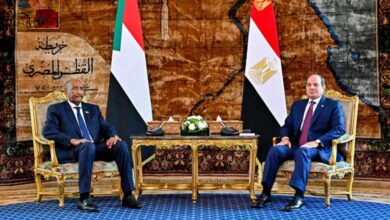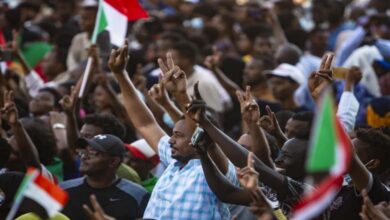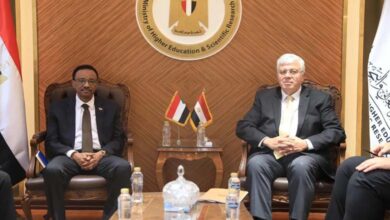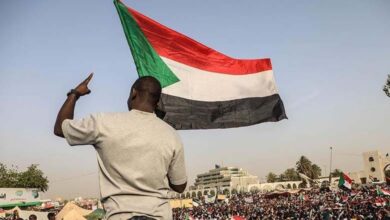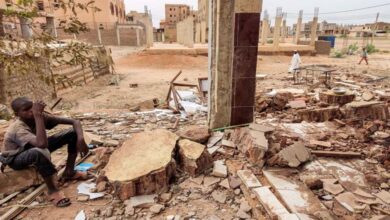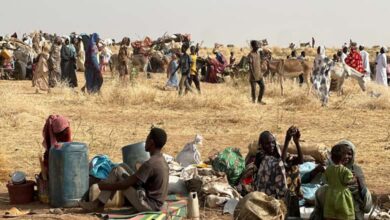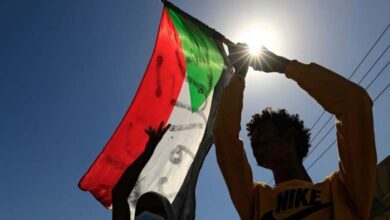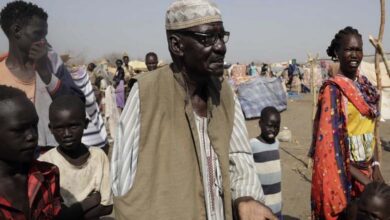Amini protests in Iran: Will forensic medicine extinguish the Iranian’s anger?

Amid the flames of rage unfolding in Iran, the country’s forensic medical authority is to release a report on the death of Mahsa Amini, an event that sparked unrelenting outrage weeks ago.
On Friday, the Forensic Medicine Authority of Iran’s judiciary announced the results of its investigation that lasted several days following the death of Mahsa Amini, which sparked a wave of protests in the country. The investigation carried banners demanding the departure of the Iranian regime and the establishment of freedoms for women.
The report said that “the death of Amini Mahsa was the result of an underlying illness related to an operation at the age of eight.”
“Based on the hospital’s medical records of the previous operation, which was touched by Amini, and through the CT scan of the brain and lungs, the results of the physical examination and autopsy, and the pathological tests, it was found that the death in question was not the result of a blow to the head or the body’s vital organs and elements,” he said.
“Following surgery on Mahsa Amini of a brain tumor at the age of eight, the deceased was suffering from subthalamic axis, pituitary gland and other glands including adrenal gland and thyroid,” the Iranian statement said.
“Because of this underlying disease, the deceased was treated with hydrocortisone, lifothyroxine and dysmorpicin,” he concluded.
“On September 13, at 19:56 (local time), Mahsa Amini suddenly lost consciousness and fell to the ground due to the underlying disease. The deceased did not have the capacity to compensate and adapt to the situation, and therefore, under the circumstances, fell to the ground,” the report said.
Mahsa Amini “suffered from heart arrhythmias and blood pressure is decreasing, and awareness has dropped because of ineffective cardiorespiratory resuscitation operations in the first critical minutes, acute oxygen shortage and brain damage as a result”, he said.
“Despite the return of cardiac functions after the resuscitation process for the emergency staff, the respiratory support did not work, and despite this she was transferred to the hospital, the patient died due to multiple organ failure due to a lack of brain oxygen,” the Iranian Forensic Organization noted.
No official position has yet been issued by Mahsa Amini’s family or the family’s lawyer regarding what the Iranian forensic doctor said.
Arrests
On a related note, reports by Iranian human rights organizations said on Friday that the security authorities arrested more than 300 political and civil activists and students during the wave of protests that broke out after the death of Mahsa Amini in Tehran in mid-last month.
“More than 300 political and civil activists and students were arrested during protests across the country,” the London-based Iran International quoted reports by human rights organizations, including the Committee for the Monitoring of Detained Persons in Iran, adding that “only more than 100 students from various universities were arrested.”
“This figure is in contrast to the thousands of protesters who were arrested by the official authorities … during the protests,” the report said.
Hengaw, a human rights organization that covers Kurdish areas in Iran, said more than 2,000 Kurds have been arrested, adding that it “has been able to verify the identity of more than 400 of the detainees”.
Reports also revealed the arrest of about 30 journalists including Elha Mohammadi, who covered the funeral of Amini Mahsa. The International Federation of Journalists and Reporters without Borders also reported the arrest of 19 journalists during the uprising that swept Iran.
Jamming to “Persian”
French satellite operator Eutelsat called on the Iranian government to stop jamming its satellites immediately and “forever.”
“As of September 26, the Iranian government has sent jamming devices to two of the company’s moons,” the company said in a statement, adding that it “has asked the Iranian authorities to refrain from sending jamming devices.”
The intervention disrupted the broadcasting of many radio and television programs in Farsi that were broadcast from outside Iran.
Press reports indicated that Iran jammed the BBC Persian satellite channel Hotbird.
“In addition to Persian-speaking networks, many non-Persian-speaking networks also face problems due to Iranian government confusion,” the French company said.
On Tuesday, the Persian-language Iran International TV channel, which broadcasts from London and Washington, said that the Iranian government has stopped its programs, adding that the media is following the issue through international bodies.
Also on Friday, Mohsen Araki, a member of the Assembly of Experts on Iranian Leadership, threatened the ability of the fundamentalist movement to crush demonstrators, whom he described as “troublemakers”.
“The recent riots left 1,800 security forces injured,” Araki was quoted as saying by state media, calling the demonstrators “enemies of God, the Qur’an and humanity”.
“The rioters should know that the Hezbollah nation (supporters of the hard line), were it not for its adherence to the law, would have removed you from the streets from the first moments,” he said.


